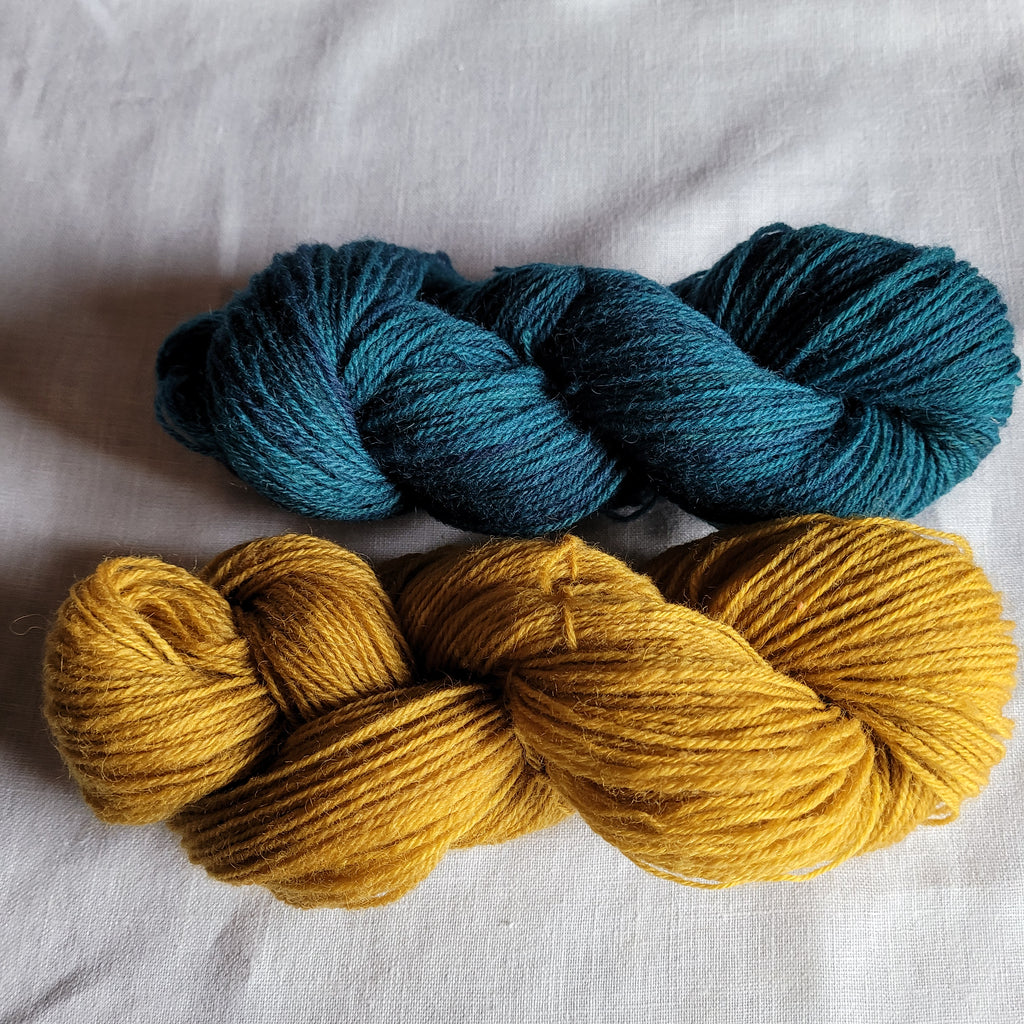Greetings Nylon-Free Sock Yarn Testers and those who are interested,
I got very involved (lost in so much detail) that turned in to paralysis through analysis. In an effort to break the logjam, let’s just get to the point.
Neither of our test blends of 70/30 or 85/15 (Dorset/Cotswold) stood up particularly well in the test conditions. We all agreed the colors were gorgeous (thank you Gretchen!). Many have guessed correctly, the gold yarn was the one with 30% Cotswold. But even with three plies, neither blend made it through four months of wearing, walking and washing unscathed. What happened? We used three plies, we used cushiony, felting resistant Dorset and long and strong Cotswold! Is that not the magic formula?




It turns out there isn’t one magic formula. We have come to appreciate why nylon, although less than 100 years old, is so popular in sock yarn. The stuff works. The yarn lasts longer before needing darning. However, the drawbacks of microfibers in the world’s water supply make us want to press on. There are at least three things we can try and one doesn’t even involve another trip to the fiber mill!
First, although most of us used size one needles and reported 8 stitches per inch gauge, we could use smaller needles to get a tighter gauge. Both MJ Packer, President and Founder of Battenkill Fiber Mill, and Hannah Thiessen Howard, social media guru, suggested this simple but effective idea. I don’t recommend just trying to tighten up your gauge by tugging on the yarn with your trusty size 1s (my hands sting just thinking about this option). Needles are readily available as small as US 000 / 1.5 mm. By contrast, US 1 is 2.25 mm. If we get 8 stitches per inch on US 1, stands to reason, we could get more on US 0, 00, or even 000. More stitches per inch gives us denser, more durable fabric.
In discussion with MJ she also suggested we could have spun the yarn tighter. Some knitters commented they found the yarn “splitty.” Not everyone experienced this, but it’s much easier to catch your needle between plies if the plies are fairly loose.
Friend of Solitude Wool and Cotswold shepherd, Lynne Updegrove, knits socks from 100% Cotswold yarn. She’s generously lent me two pairs: the pair on the left is brand new; and the pair on right she’s been machine washing and wearing for a year. Wow! There is some appreciable wear on the ball and the heel of the worn socks, but they’ve quite a few miles to go before needing darning. As we mature, we need more cushion under our feet, hence our focus on Dorset wool. But even longwools, knit densely, can provide cushion. So there’s a balance.

The part you’ve all been waiting for, prizes!! The winners all receive a skein of the next sock yarn Solitude Wool produces! We have decided not to give up on our nylon-free sock yarn quest, but our next batch of sock yarn will include Dorset wool, nylon, and more twist! We can’t leave wool at the mill forever and we know nylon works. Stay tuned.
First to Finish: Maddie Lindquist, finished the pair on Jan 23, 2022

Most Miles put on a Pair: goes to Emily Miller, scitchet, on ravelry. These don’t look too bad for 253 miles of hiking! I bet her boots fit well.

Prettiest Pattern: Mary L

Finally, if you are one of those people who enjoy eye watering detail, you may view the results of all the sock journals here:
nylon free sock yarn test summary
Thank you Karen, Joan, Maddie, Lindsay and everyone else who stopped by our booth at the Maryland Sheep and Wool Festival! It was so good to see you!
Stay Woolly,
Kathy Reed
Partner


Comments (1)